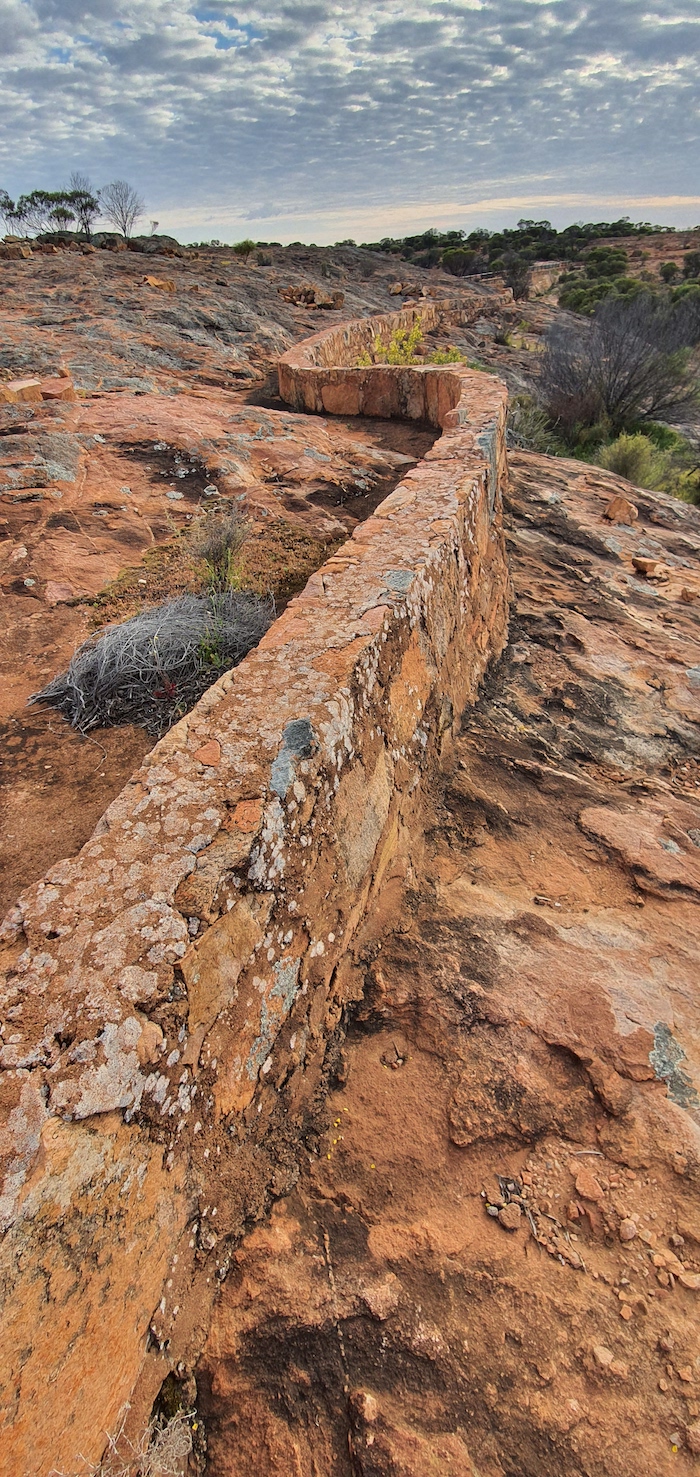The numerous granite outcrops throughout Western Australia’s agricultural regions are a valuable source of water if the runoff can be captured or ‘harvested’.
Many of these granite outcrops, particularly eastward towards Kalgoorlie and beyond, have had low walls, typically 300-500mm high, erected on a selected contour of the outcrop that channels water flow into another channel or a culvert and ultimately into a reservoir or tank located lower down the rock. Many of these reservoirs were roofed to slow down evaporation.
- Uprights are all that remains of the means to reduce evaporation. The reservoir was roofed.
The harvest walls that aggregate water from the rock and the channels that then direct the precious liquid into a tank or dam are invariably fine examples of stonemasonary.
Wave Rock (more correctly Hyden Rock) is probably the most famous rock to be harvested. Clever photographers avoid including the wall at the top of the wave in their photographs.
- A fine example of a harvest wall. This is at Cardunia Rocks.
Water harvesting and collection in tanks was often for community water supplies but the most common use was for the boilers on steam trains.
The amount of water harvested from a granite outcrop depends on the size, steepness and shape of the rock. Estimates of runoff at, for example, Karalee Rock are that a 25mm/hour downfall would have a runoff of 6200L per acre.
Reference
Laing, I.A.F. and Hauck, E.J., Water harvesting from granite outcrops in Western Australia, Journal of the Royal Society of Western Australia, 80: 181-184, 1997.
© Kim Epton 2019-2024
292 words, two photographs.
Feel free to use any part of this document but please do the right thing and give attribution to adventures.net.au. It will enhance the SEO of your website/blog and Adventures.
See Terms of Use.


